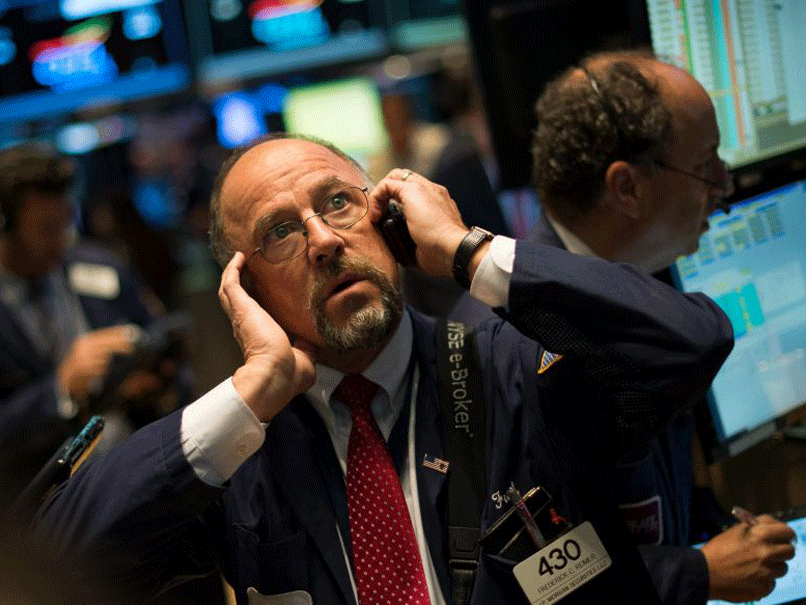Rollercoaster day on stock markets
Dow Jones dives as much as 460 points before bouncing back

Your support helps us to tell the story
As your White House correspondent, I ask the tough questions and seek the answers that matter.
Your support enables me to be in the room, pressing for transparency and accountability. Without your contributions, we wouldn't have the resources to challenge those in power.
Your donation makes it possible for us to keep doing this important work, keeping you informed every step of the way to the November election

Andrew Feinberg
White House Correspondent
Concerns about a slowdown in the world economy sent stocks tumbling on both sides of the Atlantic in afternoon trade amid wild swings in many securities markets as many investors piled into “safe haven” government bonds.
By mid-afternoon in New York, the Dow Jones Industrial Average and the S&P 500 indexes were both down more than 2.6 per cent - and the S&P has now fallen roughly 8 percent since its record closing high on 18 September.
But a late rally managed to lift US stocks off session lows that saw the Dow drop more than 460 points at one stage, and briefly pushed the broader S&P 500 index and the tech-dominated Nasdaq gauge into negative territory for the year.
The Dow ended down 173 points down at 16,141.7, while the Nasdaq fell 24.5 to 3785.9. The S&P 500 closed at 1862.5, down 15 points.
Explaining Wall Street’s declines, traders cited the potential impact of economic weakness around the world on US company earnings and also the spread of Ebola. Some traders claimed there was an “unprecedented lack of liquidity” when US markets opened.
Data showed that US retail sales and producer prices fell in September, and manufacturing activity in the New York area slowed down to its weakest pace since April.
The FTSEurofirst 300 index of top European shares closed more than 3 per cent lower at 1,252.83 points, the lowest since December last year.
"The clincher is that some of the concerns about Europe and the other economies slowing down has reached our shores today with the retail sales number and the PPI number," said Scott Armiger, portfolio manager at Christiana Trust.
The Vix index of implied share price volatility in the United States – sometimes called the “Wall Street fear gauge” – jumped more than 20% at one stage to 28. In July the Vix was at 10.
“The concern here is that the weakness in Europe and Asia is going to be exported to the US and our economy is going to be negatively impacted,” Bruce Bittles, chief investment strategist at RW Baird & Co. told Bloomberg News.
Some traders told CNBC they experienced an “unprecedented lack of liquidity” when markets opened on Wednesday. Eric Hunsader of Nanex said there were 179 "mini flash crashes" during the first 15 minutes of trading.
"There was no liquidity at all, so it doesn't take a whole lot of size to really move the price," Hunsader told CNBC.
"This was a pukage. People were putting in market order to sell on the open – ‘just get me out' -- without thinking," said Brian Stutland of Equity Armor Investments.
Subscribe to Independent Premium to bookmark this article
Want to bookmark your favourite articles and stories to read or reference later? Start your Independent Premium subscription today.
Join our commenting forum
Join thought-provoking conversations, follow other Independent readers and see their replies
Comments